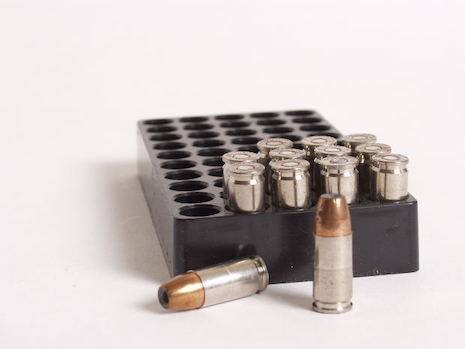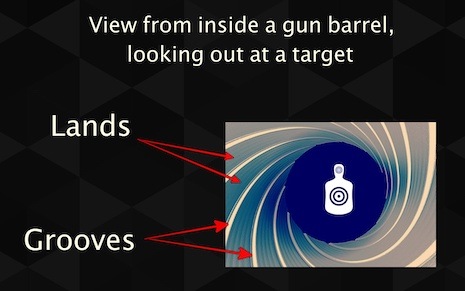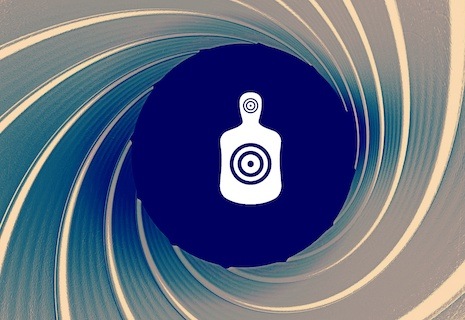Using fired bullets and casing examinations to solve murders is not a new thing. Not at all. In fact, I recall a case I worked back in the 80s where a man was murdered/executed by a drug dealer and a couple of his “employees.”
They’d kidnapped the fellow, a crack addict, because he’d ripped off the dealer by pinching cocaine from the supply he was supposed to sell, replacing it with pieces of soap which he peddled as the real thing. Customers quickly grew angry and, well, that’s when life grew short for the addict.
The trio of drug dealers took the addict to a secluded spot down a long and rarely used country road where they forced him to get on his knees. One of the men then fired a .32 round into addict’s head. They then pulled the body into the woods and left it for animals and weather to dispose of it.
One of the three couldn’t live with what they’d done so he contacted me. But he said right then and there that he’d never in a million years testify against the gang leader. I understood.
Without his testimony or further assistance, I knew I had find evidence that would connect the men to the crime. So I tailed the dealer day-in and day-out until he got careless and gave me a reason to search him. Long story short, the gun I found tucked in his waistband matched the one used to kill the kidnapped man.
Lab scientists at the Virginia Department of Forensic Science used a variety of methods to determine the match. Some of what they do when these things are presented to them for testing and comparison are:

Measure the base diameter of the evidence bullet and compare this measurement with known measurements published in reference material.
Determine the number and widths of the lands and grooves and compare to those in the current edition of the AFTE glossary.
Determine the widths of one land and groove impression. Then multiply by the number of total land and groove impressions. Use the mathematical formula C=πd to determine the circumference of the bullet.
Spiral grooves are cut into a gun barrel to produce rifling. Lands are the raised portions between the grooves.
Rifling – spiral grooves cut into a gun barrel in order to produce spin on the projectile. The spin/spiraling stabilizes it while in flight.
The categories of rifling characteristics are:
- caliber (bore diameter),
- number of land and grooves
- direction of twist (the cut grooves produce the bullet’s spin which, in turn, improves accuracy and distance).
- land and groove impression dimensions.

Physical characteristics of the evidence bullet—weight, shape, composition, nose design, and number and placement of cannelures, may help to determine the caliber of the fired round.

If a suspect firearm is submitted, a direct microscopic comparison is done between test-fired bullets and the submitted questioned bullet. ~ FBI
The FBI’s General Rifling Characteristics File (GRC) is often utilized when attempting to determine possible firearm types that could have fired an evidence bullet. This extensive file is particularly useful when the firearm used has not been located.
- Comparison Microscope
- Caliper/Micrometer/Ruler
- Scale/Balance
- Ammunition references
- Stereo Microscope
- Stereomicroscope (provides three dimensional viewing of a bullet).
When examining fired bullets, and when comparing them to known samples (bullets test-fired from suspect’s weapon and compared to round found at the scene or inside a body), investigators and/or scientists should record the following information
- Caliber/gauge
- Bullet/slug weight
- The number of land and grooves
- Direction of twist
- Width of lands
- Width of grooves
- Bullet diameter.
- Composition of bullet.
- Style.
- Manufacturer/marketer of bullet/projectile. If applicable, use reference materials such as an ammunition database.
- Detailed description of the bullet.
- Note type and position of cannelures.
- Note any foreign/extraneous markings—shave marks, flared base, etc.
- If possible, compare marks on bullets with tests from a firearm or with other bullets.
For nearly two decades, ATF has maintained a database of ballistic evidence (since 1999). The database—National Integrated Ballistic Information Network—contains well over 3 million bits of evidence and information that’s available to all law enforcement agencies.
Remember, writers, modern ammunition uses “smokeless” powder. It’s fairly stable, the quality is uniform, and it leaves little residue and a less offensive odor. IT IS NOT CORDITE!!!! Cordite manufacturing ceased at the end of WWII.
The characters in your stories CANNOT smell cordite, unless, of course, you’re writing historical fiction.


